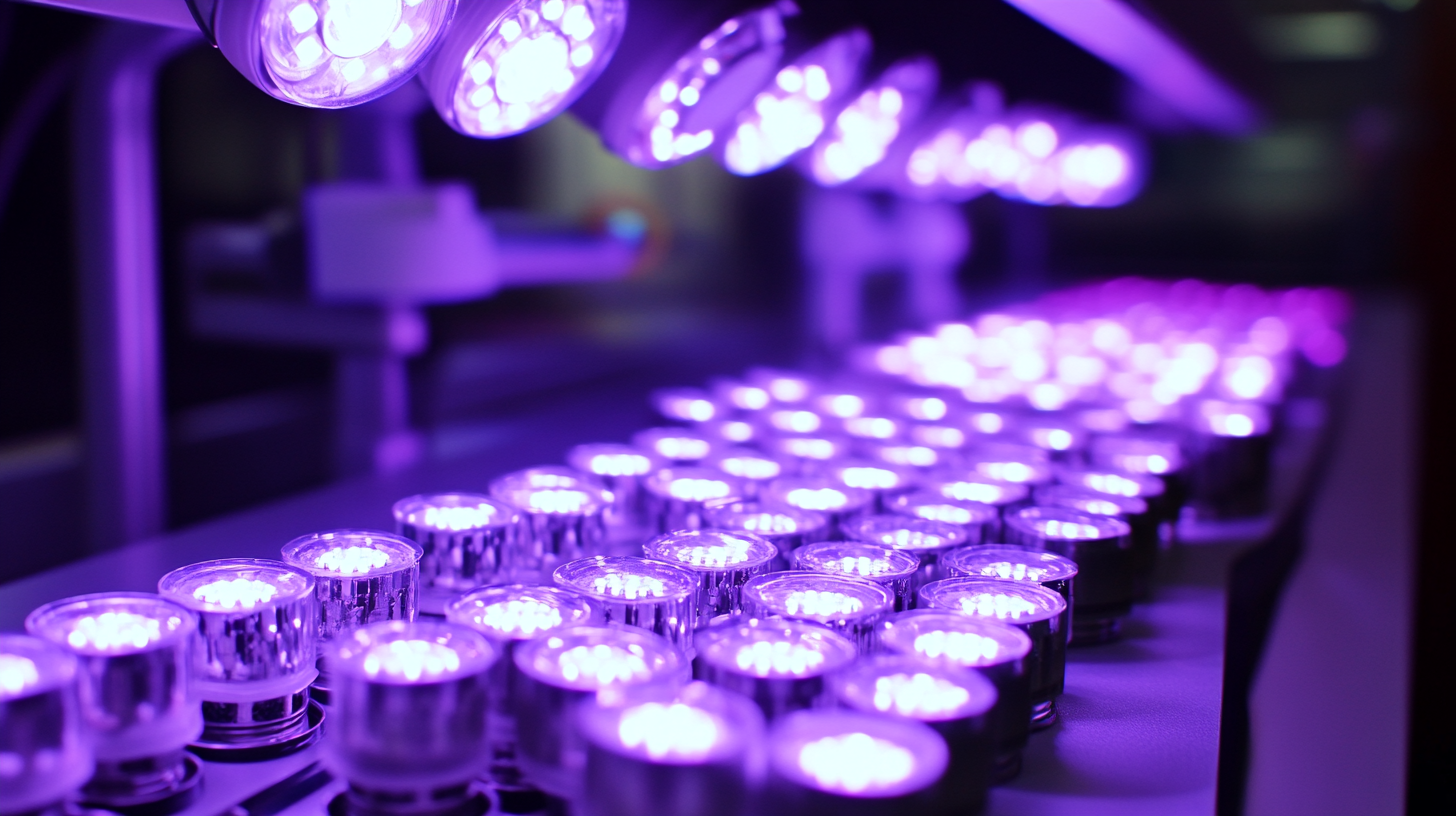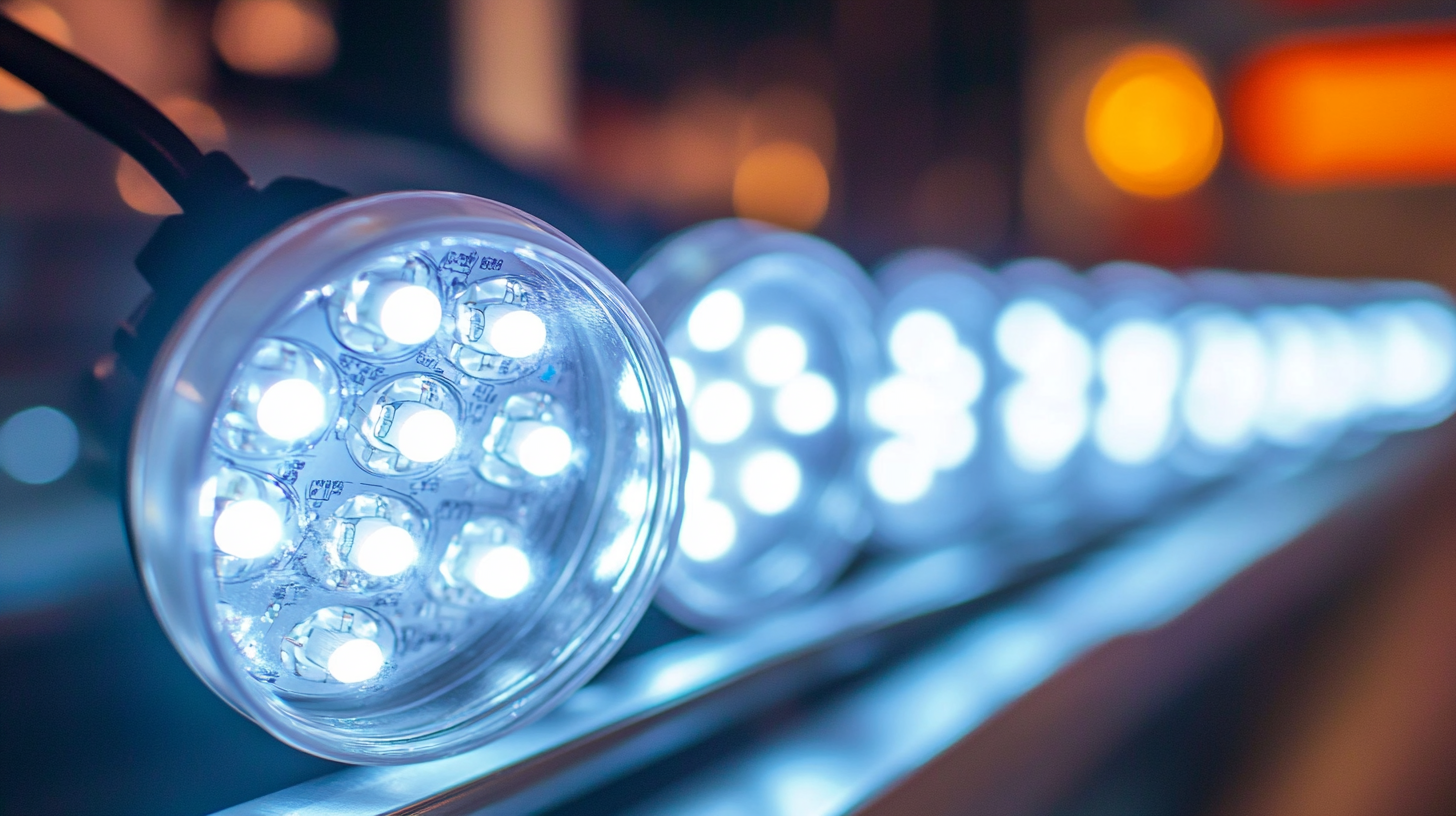Understanding Global Manufacturing Standards for Best LED Lights Lamp: How to Choose the Right Product
In today's rapidly evolving marketplace, the demand for energy-efficient and sustainable lighting solutions has propelled LED lights lamps to the forefront of the global manufacturing sector. According to a report by Allied Market Research, the global LED lighting market was valued at approximately $63.07 billion in 2020, with projections indicating that it will reach $143.51 billion by 2027, growing at a CAGR of 12.4% during this period. As consumers become increasingly aware of the environmental impact of their choices, understanding global manufacturing standards is crucial for selecting the most suitable LED lights lamp. This ultimate guide will navigate through the complexities of these standards, ensuring that you can make informed decisions when choosing high-quality LED products that meet both your needs and sustainability goals.

Global Manufacturing Standards: Key Factors in LED Lamp Quality
When selecting the best LED lights, understanding global manufacturing standards is crucial for ensuring product quality and longevity. Key factors such as energy efficiency, color accuracy, and lifespan are governed by international standards like the IEC 62612, which outlines performance metrics for LED lamps. According to the U.S. Department of Energy, high-quality LED lamps boast an efficacy of 100 lumens per watt or more, enabling significant energy savings and reducing carbon footprints.
**Tip:** Always check for certifications such as ENERGY STAR or RoHS compliance, which indicate adherence to energy efficiency and environmental safety standards. These certifications ensure that the product has undergone rigorous testing and meets industry benchmarks.
Additionally, the reliability of LED lamps can be influenced by factors like thermal management and component quality. Studies have shown that LED products using high-grade materials and incorporating effective heat dissipation mechanisms can last up to 25,000 hours or more. It is essential to evaluate the manufacturer’s commitment to quality assurance practices, as this can greatly affect performance over time.
**Tip:** Look for detailed product specifications and warranty information from manufacturers. A longer warranty period typically correlates with better product quality and manufacturer confidence in their offerings.
Understanding Global Manufacturing Standards for Best LED Lights Lamp: How to Choose the Right Product
| Criteria | Description | Standard | Importance |
|---|---|---|---|
| Lumen Output | Measures the total amount of visible light emitted by a source. | IES LM-79 | High - Affects brightness and energy efficiency. |
| Color Rendering Index (CRI) | Measures how accurately a light source displays colors in comparison to natural light. | ANSI/IES RP-16 | High - Influences visual quality and aesthetics. |
| Correlated Color Temperature (CCT) | Describes the appearance of the light (cool or warm). | ANSI/IES TM-30 | Medium - Affects mood and ambiance. |
| Lifespan | The period of time a lamp functions effectively before failure. | IES LM-80 | High - Reduces replacement costs and wastes. |
| Energy Efficiency | Ratio of luminous output to energy consumption. | Energy Star/ERP | High - Lowers electricity costs and environmental impact. |
| Dimming Capability | The ability of a light source to adjust its brightness. | NEMA SSL 7A | Medium - Enhances versatility and user comfort. |
| Safety Certifications | Compliance with safety and performance standards. | UL, CE, RoHS | High - Ensures user protection and product quality. |
Identifying Top LED Light Types for Optimal Performance
When selecting the best LED lights for optimal performance, understanding the various types available on the market is crucial. LED technology has advanced significantly, with reports indicating that as of 2022, LED lighting accounts for approximately 58% of the total general illumination market and is projected to reach 82% by 2030. The primary types of LED lights include standard bulbs, floodlights, and strip lights, each tailored for specific applications and environments.
Standard bulbs, often used for general lighting in residences and commercial spaces, provide warmth and energy efficiency, with typical energy savings of up to 80% compared to incandescent bulbs. Floodlights, on the other hand, are designed for outdoor use, providing high-intensity light ideal for illuminating large areas. According to a study by the U.S. Department of Energy, solid-state lighting (SSL), which encompasses LED technology, can reduce lighting energy consumption by over 40% when compared to traditional lighting systems. Lastly, LED strip lights offer versatility and are commonly used for decorative purposes, thanks to their flexibility and ease of installation, making them increasingly popular in both residential and commercial design.

Understanding Certification Labels and Their Importance in LED Choices
When choosing LED lights, understanding certification labels is crucial. These labels provide essential information about a product's safety, efficiency, and environmental impact. Common certifications include Energy Star, which indicates superior energy efficiency, and UL, which signifies that a product has been tested for safety. By considering these labels, consumers can make informed choices that align with their energy conservation goals and ensure they are investing in reliable products.
Additionally, certification labels often reveal compliance with international manufacturing standards. For instance, products labeled with the CE mark meet European safety requirements, while the RoHS label indicates compliance with restrictions on hazardous substances. Familiarizing oneself with these labels helps consumers navigate the vast array of options in the market, ensuring that they select LED lamps that are not only effective but also safe for use in their homes and offices. By prioritizing products with appropriate certifications, buyers can contribute to a more sustainable future while enjoying high-quality lighting solutions.
Evaluating Energy Efficiency Ratings in LED Lighting Selection
When selecting the right LED lights for tropical buildings, understanding energy efficiency ratings is crucial. Energy-efficient LED lights not only contribute to significant cost savings over time but also enhance the sustainability of a building. To make informed choices, it's essential to evaluate the integrated energy efficiency features of different LED products. Look for those that provide high lumens per watt, as this indicates effective light output with lower energy consumption.
In addition to lumen efficiency, consider the Color Rendering Index (CRI), which measures how accurately a light source displays colors compared to natural light. A higher CRI is preferable, especially in settings where color accuracy is essential. Furthermore, assessing the lifespan of the LED product can prevent frequent replacements, ultimately reducing waste and enhancing energy conservation. By prioritizing these energy efficiency features, building owners can ensure that their chosen lighting solutions not only meet aesthetic needs but also comply with global manufacturing standards for efficiency and sustainability.
Best Practices for Selecting the Right LED Lamp for Your Needs
 When selecting the right LED lamp for your needs, it’s crucial to consider several best practices that can guide your decision-making process. First, assess the brightness level required for your specific environment. Measured in lumens, the brightness directly impacts the effectiveness of your lighting. For example, task lighting in kitchens or workspaces typically requires higher lumens, while ambient lighting in living rooms may call for softer options.
When selecting the right LED lamp for your needs, it’s crucial to consider several best practices that can guide your decision-making process. First, assess the brightness level required for your specific environment. Measured in lumens, the brightness directly impacts the effectiveness of your lighting. For example, task lighting in kitchens or workspaces typically requires higher lumens, while ambient lighting in living rooms may call for softer options.
Additionally, pay attention to the color temperature of the LED bulbs, which affects the mood and functionality of a space. Ranging from warm white (around 2700K) to daylight (upwards of 5000K), the right color temperature can enhance both productivity and relaxation. It's also advisable to check for energy efficiency ratings and longevity, as these factors not only impact your energy bills but also contribute to sustainability efforts. By prioritizing these elements in your selection process, you can ensure that your LED lamp not only meets your aesthetic preferences but also serves your functional needs effectively.
